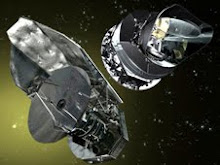Throughout the world, people and their governments have begun to recognize that their remaining dark night skies represent valuable natural resources to be protected and promoted. State and national parks, in particular, can offer astronomy tourists and the curious public amazing views of the Milky Way. This singular experience is completely unknown to the majority of people who live in or near cities. Those few who ultimately encounter the Milky Way are most likely bewildered by what they are seeing. This need not be the case, however. A properly-prepared educator should be able to point out and describe the varying stellar and nebular features that characterize the Milky Way. Indeed, such trained and equipped educators could attract new environmentally-friendly business to their homelands in the form of “Astro-Tourism.”
The program coordinated by a pilot network of international partners who are engaged in showing wonders of the dark night sky to “Astro-Tourists” and the general public. The partnership will initially include Prof William H. Waller, Dr. Noorali Jiwaji at the Open University of Tanzania, Mr. Thilina Heenatigala of the Sri Lanka Astronomical Association, and Dr. Aala Ibrahim at the University of Cairo. Our primary intent is to foster site-based programs, where people can experience – and begin to understand – the dark night sky.
Our programs will showcase the cycling of matter from clouds to stars and back that characterizes “galactic ecosystems”. In this way, we will be introducing many of the key scientific phenomena and processes that the Herschel mission has been designed to address. Pending the results of this initial effort, we will seek funds from other sources to expand the program and so include astronomy educators at other dark-sky sites around the world.
Friday, November 27, 2009
Subscribe to:
Posts (Atom)









